The same method for building structural walls in buildings can be applied when building retaining walls made with rammed earth encased in steel-belted rubber. Depending on the load the retaining wall is retaining, the batter and other adjustments should be considered.
Some tire retaining walls have been built up to 25 ft. high. Tires make an inexpensive solution that requires no concrete, wood or steel. The proper construction of a tire retaining wall involves filling the tires with dirt thats compacted with a sledgehammer or a pneumatic tamper. We call this process pounding the tires. First, you place the tire on a level grade, then pound it, checking it for level. Always pound a tire in place. A 15-in. tire will take nearly 300 lb. of earth.

The wall is built using staggered courses, just like a block wall. Step back each tire course 3 in. to keep the wall from toppling and berm and tamp earth behind each completed course. A few courses of small tires can be pounded at the top of the wall for a sturdy railing. The weight of the tires and their ability to interlock with the tires below mean that no mortar or reinforcing steel is required.
To finish the wall, stuff mud, tin cans and rocks into the voids between the tires. Fill the voids in several steps until a fairly flat surface is achieved. At that time, metal lath is fastened to the tires with 1-1/2 in. deck screws. You can use roofing tins or even bottle caps to hold the lath in place. Then apply cement plaster. The final appearance is a stucco finish.
Tire retaining walls lean-in to the wall being retained. Each course should step into the wall anywhere from 1.5 to 4 or more. The strength of the wall pushing into the retaining wall determines this factor. The engineer for the retaining wall can help you determine the step back for each tire course.
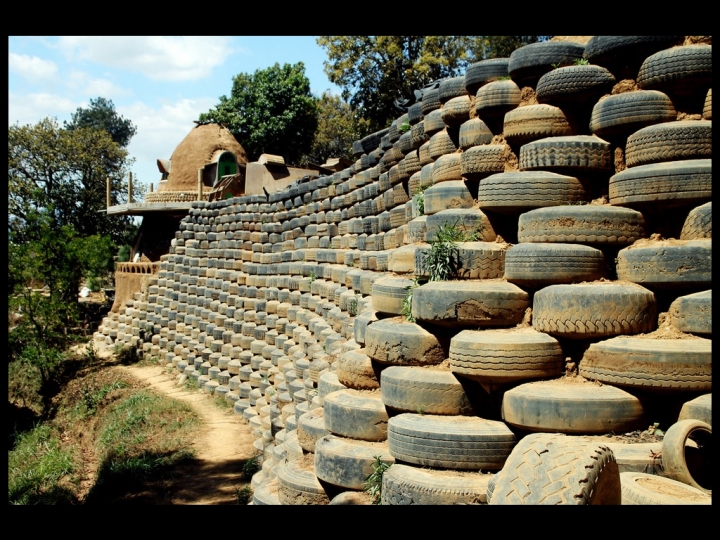
Tirewall retaining walls can be used to prevent hillside and embankment erosion and add value to residential,commercial and agricultural land. Tirewall retaining walls can also make roads and railways safer by making them wider and prevent embankment erosion. Tirewall retaining walls may cost less than competing retaining wall products made out of concrete, brick or rock baskets which makes them an affordable option for securing unstable soils along roadsides, railways, spillways or other large projects that wouldotherwise be cost prohibitive. There is also a positive environmental impact by using scrap tires over other products that require more embedded energy.

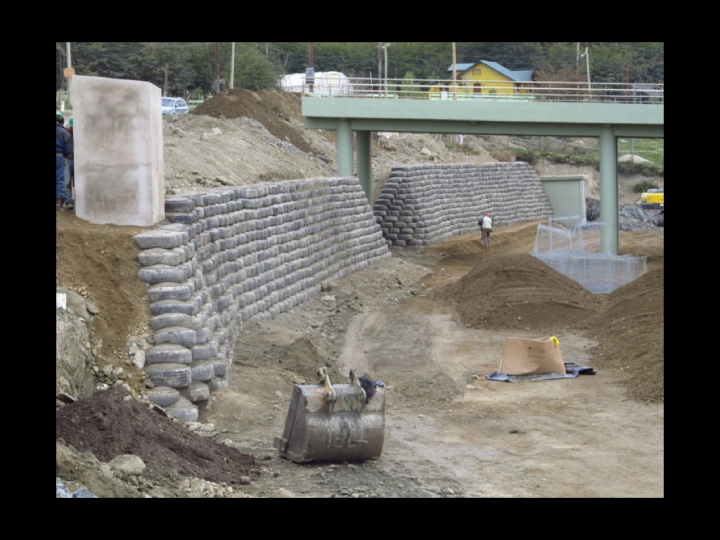


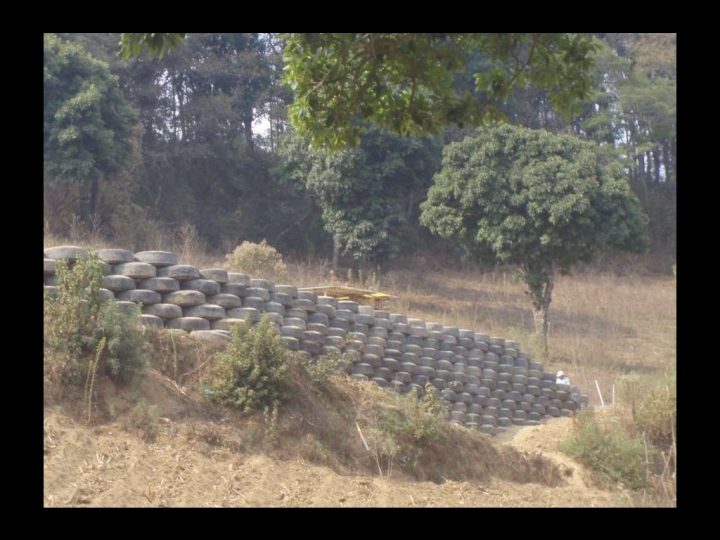
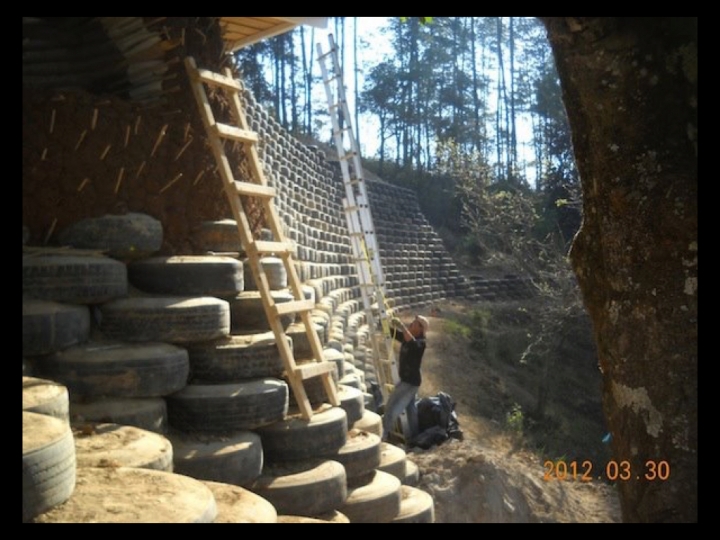
What is a Biotecture Home?
A Biotecture building is a type of passive solar house that is made of both natural and upcycled materials (such as earth-packed tires). ‘Biotectures’ can be completely off-grid or partially off-grid.
Biotectures can be built in any part of the world, in any climate (with a permit) and still provide electricity, potable water, contained sewage treatment and sustainable food production.
Biotectures are thermal mass homes first, passive solar homes second.
Whatever temperature goes into a Biotecture building, it will hold… and since it is also a Passive Solar House, it is also very tight and interacts only with the sun and the earth for heating and cooling, providing stable comfort year round in any climate. This results in being able to provide a sustainable home on property that may not be situated to the ideal of 13.5 degrees east of south.



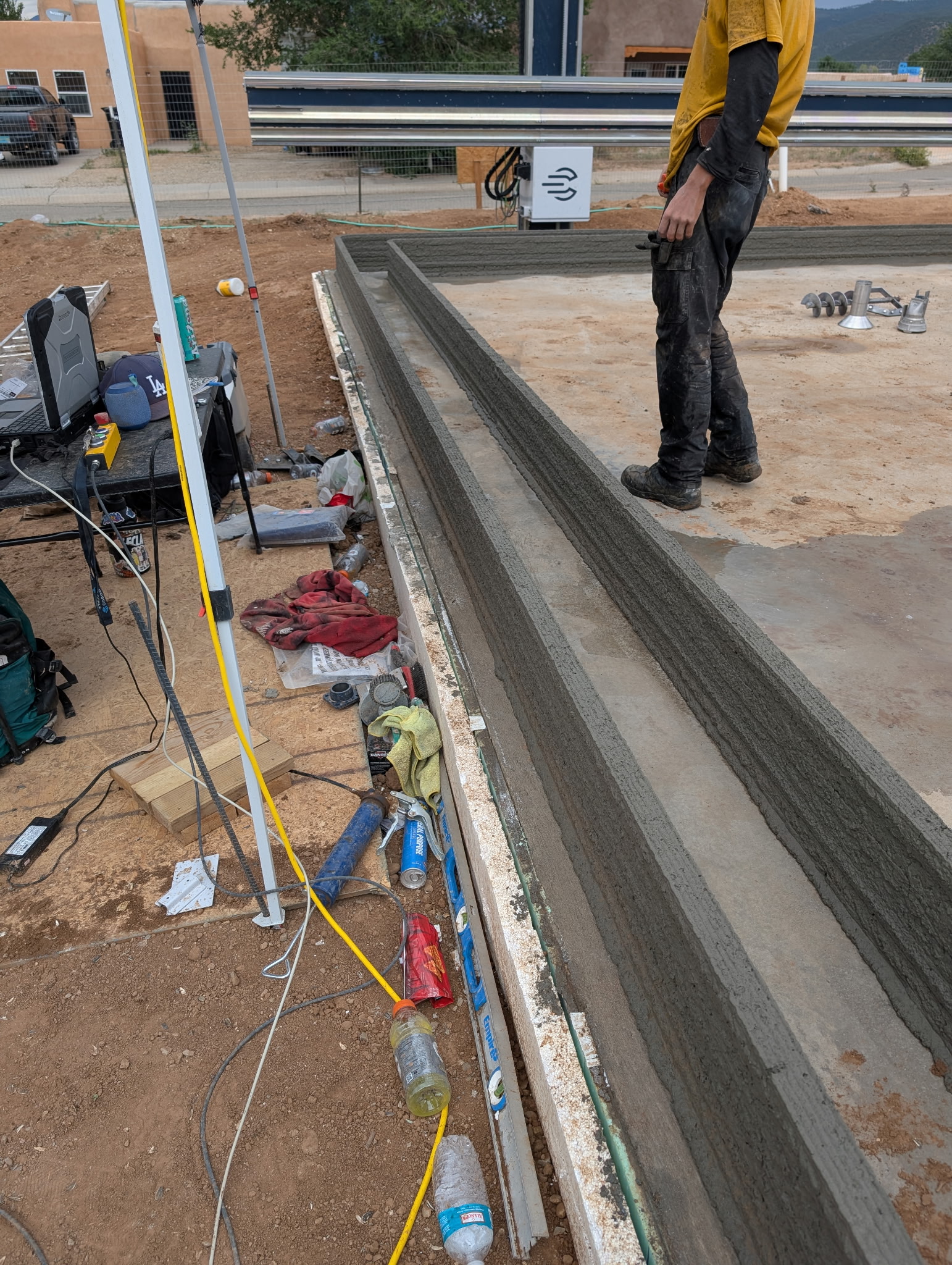



Leave A Comment